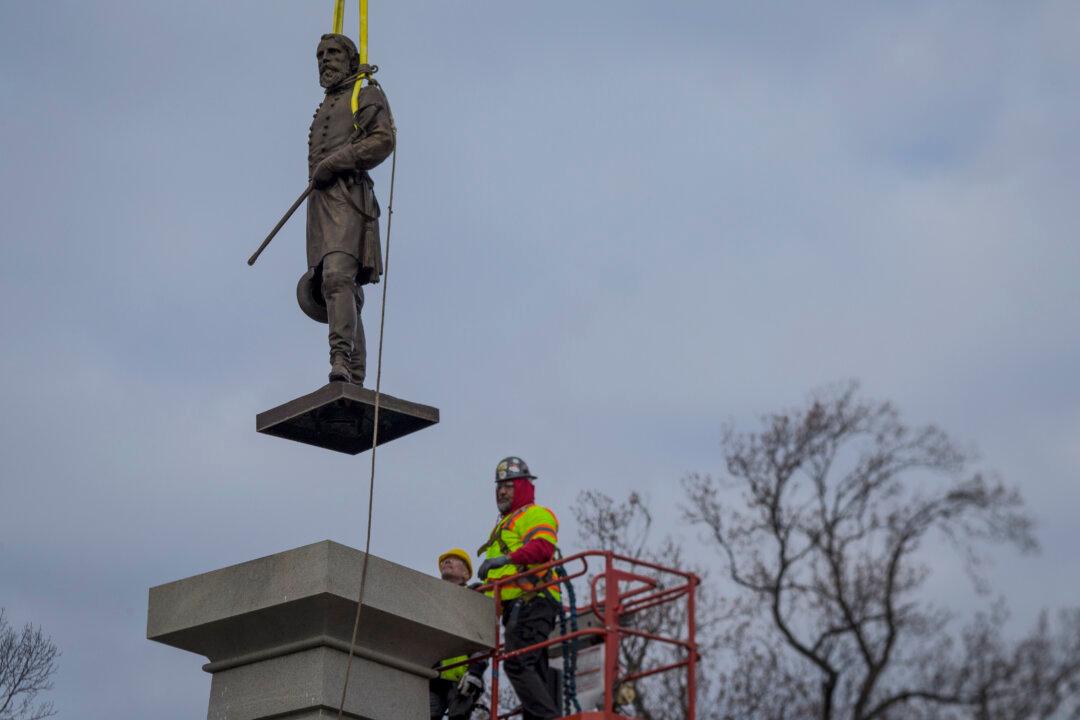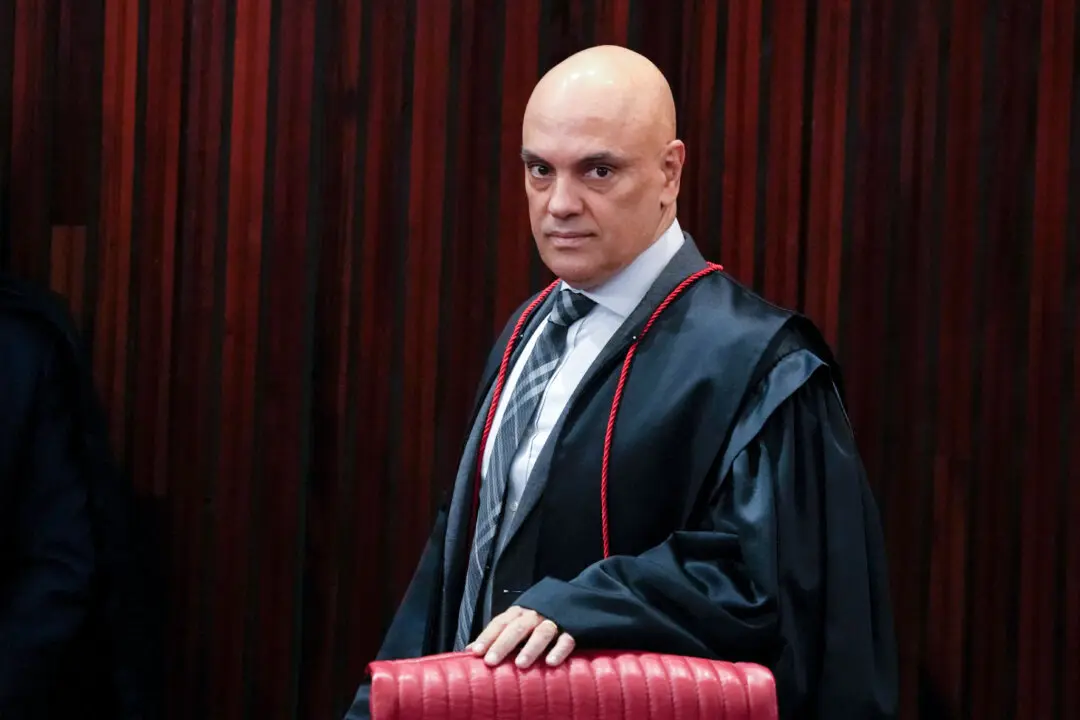RICHMOND, Va.—The city of Richmond—the capital of the Confederacy for most of the Civil War—removed its last city-owned Confederate statue Monday.
It took just minutes to free the statue of Confederate Gen. A.P. Hill from its base before a crane using yellow straps looped under the statue’s arms lifted it onto a bed of tires on a flatbed truck. After the statue was removed, the crew got to work removing the base. Several dozen people, including neighbors and some of Hill’s indirect descendants as well as supporters and opponents of the removal, stood in the closed intersection watching the crew work.





